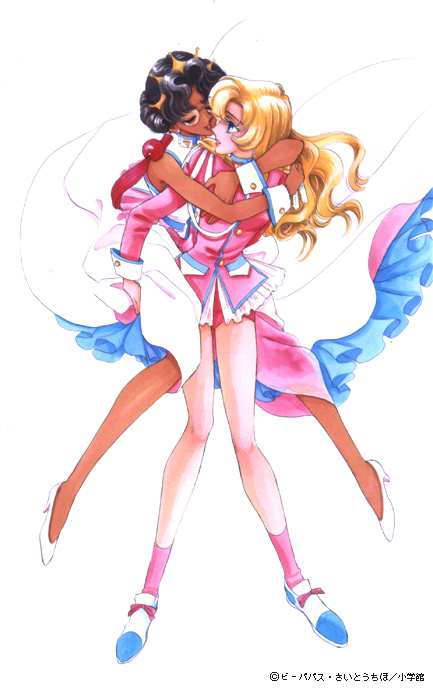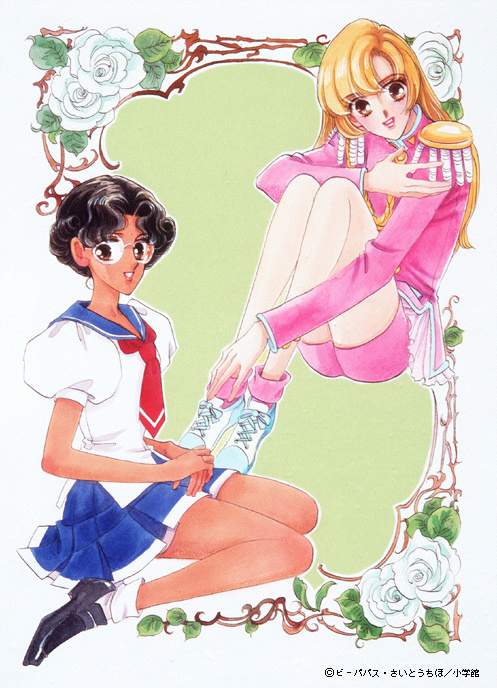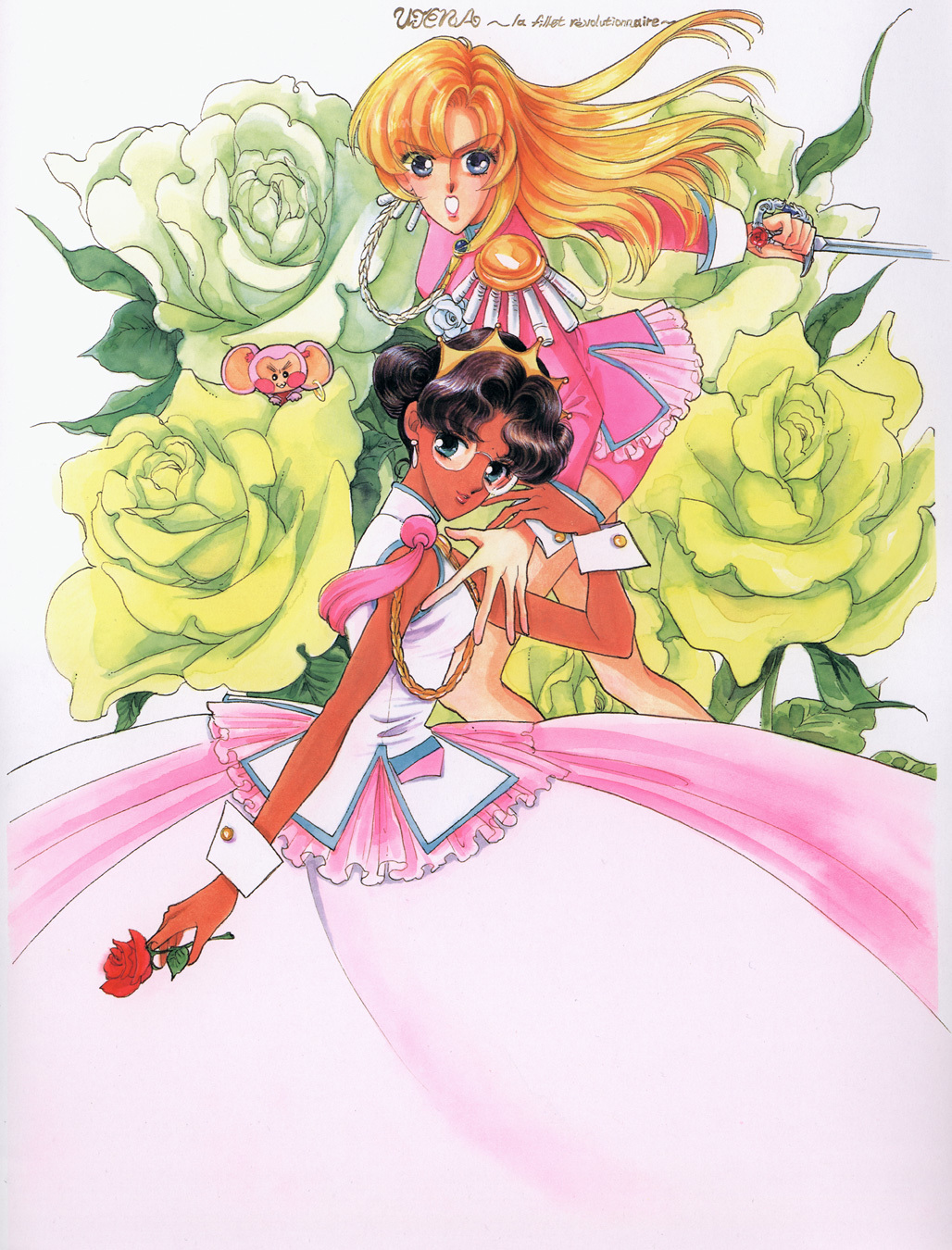I have mentioned Utena frequently when discussing The Witch from Mercury and Code Geass, only belatedly realizing that I have not discussed Utena itself at all! Being one of the most important anime series in history of the medium, comparable to such giants as Gundam 079, The Rose of Versailles, Sailor Moon and Neon Genesis Evangelion, all of whom serve as an important source of inspiration for Utena, the series is one of a must-watch for every anime fan. In fact, the premise is perhaps best described as a mega crossover of the creators’ favourite 70s series, with Oscar de Jarjeyes (The Rose of Versailles) attending a Seiran Academy (Brother Dear Brother) with Lalah Sune (Gundam 079) and a variety of 70s shoujo characters, with sparkles of magic and choreographed combat inspired by the staff’s previous work on Sailor Moon.
Revolutionary Girl Utena is a story that has several canons:
-The 1997 39 episodes long anime series, which is probably closest to the original idea as conceived by the four original creators of Studio Be-Papas (consisting of director Kunihiko Ikuhara, writer Yoji Enokido, character designer Shinya Hasegawa, manga artist Chiho Saito, as well as planner and editor Yuichiro Oguro).
-The 1996-98 manga adaptation of the original idea, drawn and written by Chiho Saito, predating the debut of the anime and running for 5 volumes. While the concept itself stays more or less the same, under Saito’s pen the characters have drastically divergent character evolution.
-The 1999 anime movie Adolascence of Utena that technically is a continuity reboot, but also cannot be fully understood without having watched the whole anime first. It perhaps serves best as the epilogue to the anime, providing solutions to several character arcs left hanging in the original series. Interestingly later the same concept was employed in Rebuild of Evangelion.
-Chiho Saito’s 1999 single volume manga adaptation of the movie that again strays drastically different from both the source material and her previous manga adaptation.
-Two short novels by Ichiro Okuchi from 1997, loosely adapting Miki’s and Wakaba’s storylines as presented in the anime while being divergent enough not to be set in the same canon.
-The ellusive dating sim visual novel from 1998, about which I frustratingly cannot find any detailed sources.
-The 20th anniversary single volume manga by Chiho Saito, providing a conclusion for the student council characters as portrayed in her 1996 manga while incorporating certain plots from the anime.
Now what is it about? The manga and the anime series start at least from the same point. The titular character, Utena Tenjou, is a tomboyish girl with a strong sense of justice which causes her to lash out on the boy who publicly mocked her friend’s love confession. Due to the strange rules of the school, this get misunderstood by the boy as a duel challenge, and so Utena has to fight – and wins. To great surprise to herself, she also wins a prize – Anthy Himemiya, who is a bride of the person currently holding the title of the winner. There is also a lot of fantastic elements that differ from version to version, from the relatively mundane pulling of swords from your lover’s chest to turning into a car. A lot of story elements are also presented in metaphorical terms, which, at least in case of the anime and especially the movie, requires a lot of reading between the lines from the audience.
The anime series is a cult classic for several reasons. Firstly, it presents an unique set and character design manner, most heavily pronounced in the film version, that makes it stand out visually among other contemporary anime. It was also the first anime series that utilized rock music in its soundtrack, with unique songs with metaphorical and philosophical lyrics composed by Julius A. Caesar playing in almost every episode. Perhaps most importantly, it was a deeply psychological series, spending several episodes on analyzing various characters’ psychologies, traumas and motives, which, while new to tv anime, is a throwback to 70s shoujo manga, which absolutely loved diving into the most disturbing aspects of human psyche. It’s also very gay, and the anime movie is even gayer. Do Utena and Anthy look like a couple to you? That’s what they are supposed to look like, and the movie ending makes it explicit. Seriously, watch the anime if you haven’t, but please check out the list of triggers for the series before, it is often VERY mature and disturbing.
As for the manga, well, it’s apparent that Chiho Saito’s vision was somewhat different, even from the character designs – Utena is a blonde with brown eyes and wears pink uniform while Anthy has black hair, brown eyes, lighter skin and wears dark blue uniform as opposed to their anime version’s pink-black and purple-red colour motifs. Utena manga takes inspiration from contemporary shoujo, with little psychological deep dives and a lot of love struggles. Unfortunately, when to compared to excellent quality anime, the manga characters tend to appear flat and unappealing. For queer fans in particular, the fact that there are almost no traces of queerness in the manga is a big disappointment. In all versions, Utena and Toga remain in love with each other, which contrasts with anime Toga manipulating Utena, and Juri Arisugawa, anime’s resident angsty lesbian, in the manga is portrayed to be obsessively in love with boys, though her epilogue story reveals she has also been in love with her friend Shiori and suffering from an inferiority complex regarding the girl, turning on its head the two’s relationship as portrayed in the anime. Queer subtext regarding other characters is also more or less absent. Manga art, however, remains of high quality and every page is simply pleasant to look at.




no subject
Date: 2023-07-03 07:01 am (UTC)Somewhere around here, I even have a Rose Ring of my very own, though it's too small to fit anything but my pinky. :)
"If it cannot break out of its shell, the chick will die without being born. We are the chick, the world is our egg. If we don't crack the world's shell, we will die without being born. Smash the world's shell, for the revolution of the world!"-